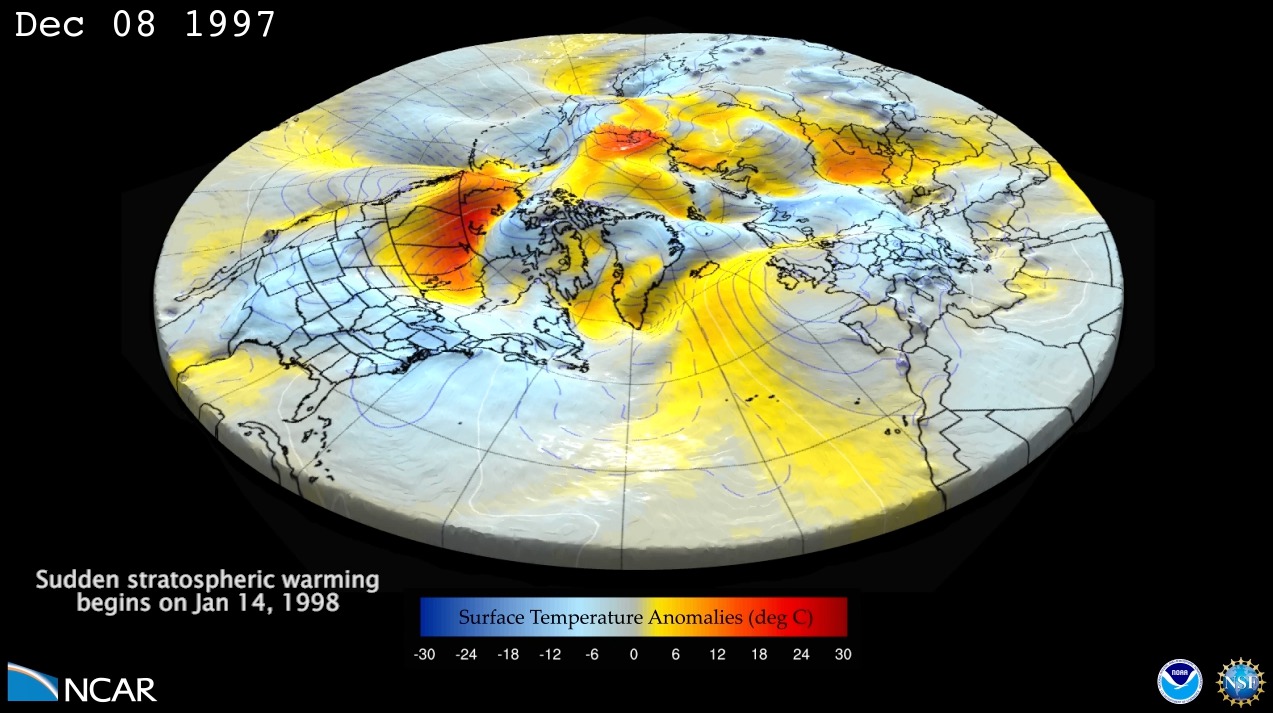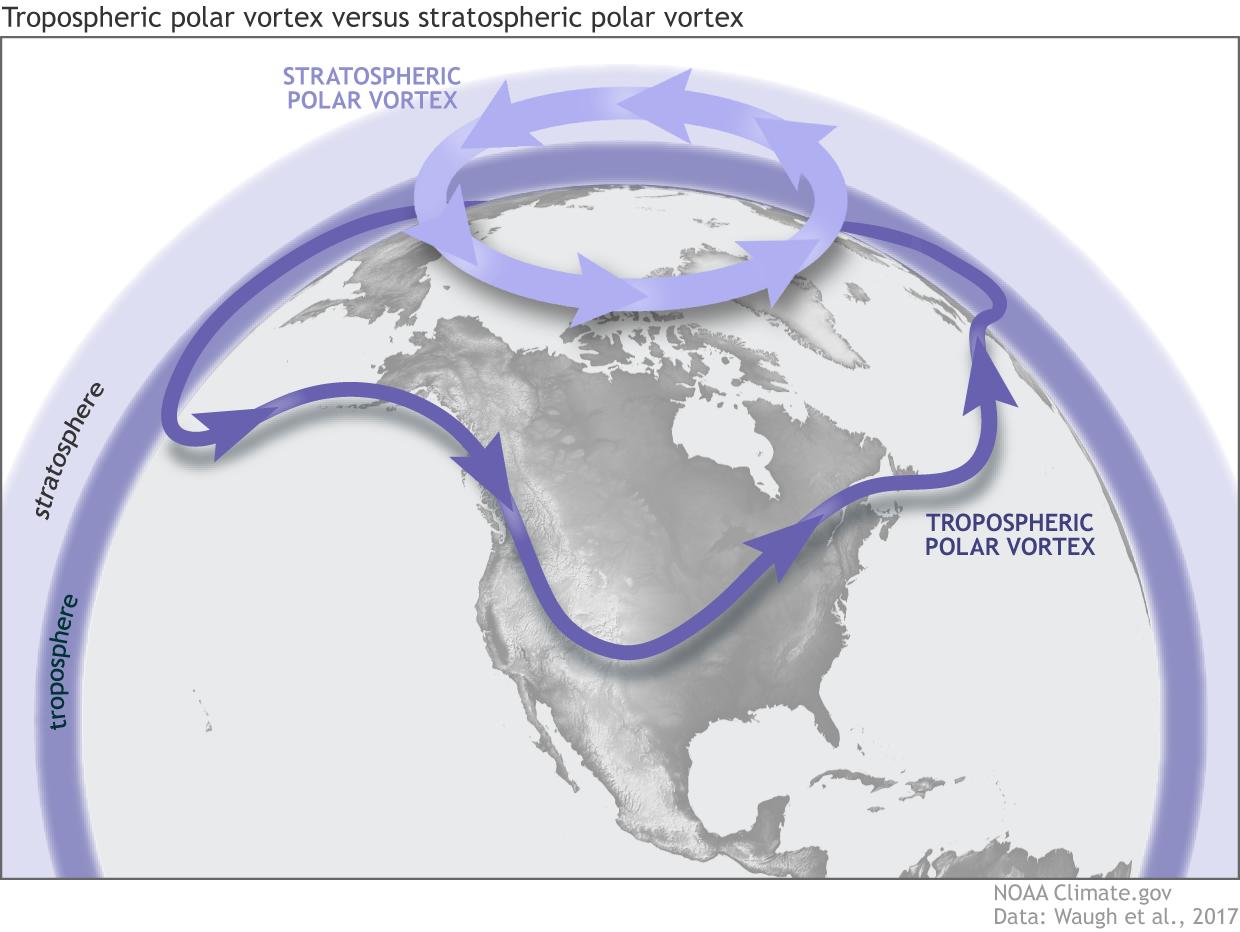Cold Warning: Is Sudden Stratospheric Warming Heading For Britain's Coldest Winter?
As the UK prepares for the winter months, forecasters are sounding the alarm about a potential cold snap that could see temperatures plummeting to levels not seen in decades. Sudden Stratospheric Warming (SSW) is a phenomenon that could lead to a prolonged period of frost and freezing temperatures, with some models predicting that Britain could be in for the coldest winter on record. But what exactly is SSW, and how might it impact the UK's winter weather?
Sudden Stratospheric Warming occurs when a sudden rise in temperature at the top of the atmosphere, known as the stratosphere, leads to a weakening of the jet stream. This weakening of the jet stream allows cold air to pour in from the north, bringing with it a prolonged period of frost and freezing temperatures. The stratosphere is the highest layer of the atmosphere, extending from about 10 to 50 kilometers above the Earth's surface. It is here that the temperature and pressure conditions are just right for SSW to occur.
One of the key factors that contribute to SSW is the movement of the polar jet stream. The polar jet stream is a fast-moving band of air that forms over the polar regions during the winter months. As it moves southwards, it brings cold air with it, which can lead to a prolonged period of frost and freezing temperatures. When the polar jet stream weakens, it allows the cold air to pour in, leading to a SSW event.
SSW is not just a weather phenomenon, it also has a significant impact on the environment. The prolonged period of frost and freezing temperatures can have a devastating impact on plant life, with many species struggling to survive the extreme conditions. The cold weather can also have a significant impact on human health, with increased risk of respiratory problems and other illnesses.
Factors that Contribute to SSW
There are several factors that contribute to SSW, including:
- Weak polar jet stream: When the polar jet stream weakens, it allows the cold air to pour in, leading to a SSW event.
- High pressure systems: High pressure systems can lead to a weakening of the jet stream, allowing the cold air to move in.
- Cold air from the north: Cold air from the north can lead to a prolonged period of frost and freezing temperatures.
- Wind patterns: Wind patterns, such as the Beaufort scale, can also contribute to SSW.
Impacts of SSW on UK Weather
The impacts of SSW on UK weather can be significant, including:
- Prolonged frost and freezing temperatures: SSW can lead to a prolonged period of frost and freezing temperatures, with some areas seeing temperatures drop below -10°C.
- Snow and ice: SSW can lead to significant snowfall and ice formation, with some areas seeing significant disruptions to daily life.
- Disruptions to transportation: SSW can lead to significant disruptions to transportation, with roads and railways becoming hazardous due to ice and snow.
- Impact on agriculture: SSW can have a significant impact on agriculture, with many crops struggling to survive the extreme conditions.
Historical Examples of SSW
There have been several notable examples of SSW in the UK, including:
- The "Big Freeze" of 1986-87: A prolonged period of frost and freezing temperatures that saw temperatures drop below -10°C in some areas.
- The "Beast from the East" of 2018: A cold snap that saw temperatures drop below -10°C in some areas, leading to significant disruptions to daily life.
- The "Winter of Discontent" of 1962-63: A prolonged period of frost and freezing temperatures that saw temperatures drop below -10°C in some areas, leading to significant disruptions to daily life.
How to Prepare for SSW
While SSW is not something that can be predicted with certainty, there are steps that can be taken to prepare for the event. These include:
- Staying informed: Staying up to date with the latest weather forecasts and warnings can help to ensure that you are prepared for SSW.
- Having a winter emergency kit: Having a winter emergency kit, including supplies such as food, water, and warm clothing, can help to ensure that you are prepared for the event.
- Having a plan: Having a plan in place, including a route to work and a plan for how to keep warm, can help to ensure that you are prepared for SSW.
What to Do If You Experience SSW
If you experience SSW, there are several steps that you can take to stay safe:
- Stay indoors: Staying indoors during the cold snap can help to reduce the risk of frostbite and hypothermia.
- Keep warm: Keeping warm can help to reduce the risk of frostbite and hypothermia. This can be achieved by wearing warm clothing, using a space heater, and staying in a warm room.
- Stay hydrated: Staying hydrated can help to reduce the risk of dehydration, which can be exacerbated by the cold weather.
- Check on vulnerable neighbors: Checking on vulnerable neighbors, such as the elderly and those with disabilities, can help to ensure that they are safe and warm during the cold snap.
Conclusion
SSW is a phenomenon that can have a significant impact on UK weather, leading to prolonged periods of frost and freezing temperatures. While it is not something that can be predicted with certainty, there are steps that can be taken to prepare for the event. By staying informed, having a winter emergency kit, and having a plan in place, you can help to ensure that you are prepared for SSW.
Did Mason Lose His Leg
Aaron Hernandezaughter 2024
Joan Van Ark
Article Recommendations
- Sophie Rain
- Rami Malek Portiaoubleday
- Jesse Plemons Breaking Bad
- Katy Newcombe
- Es Nl
- Cathy White Beyonce
- Does Gloria Borger Have Cancer
- Joe Gilgun
- Choi Jin Hyuk
- Palace Confirms Baby Number



